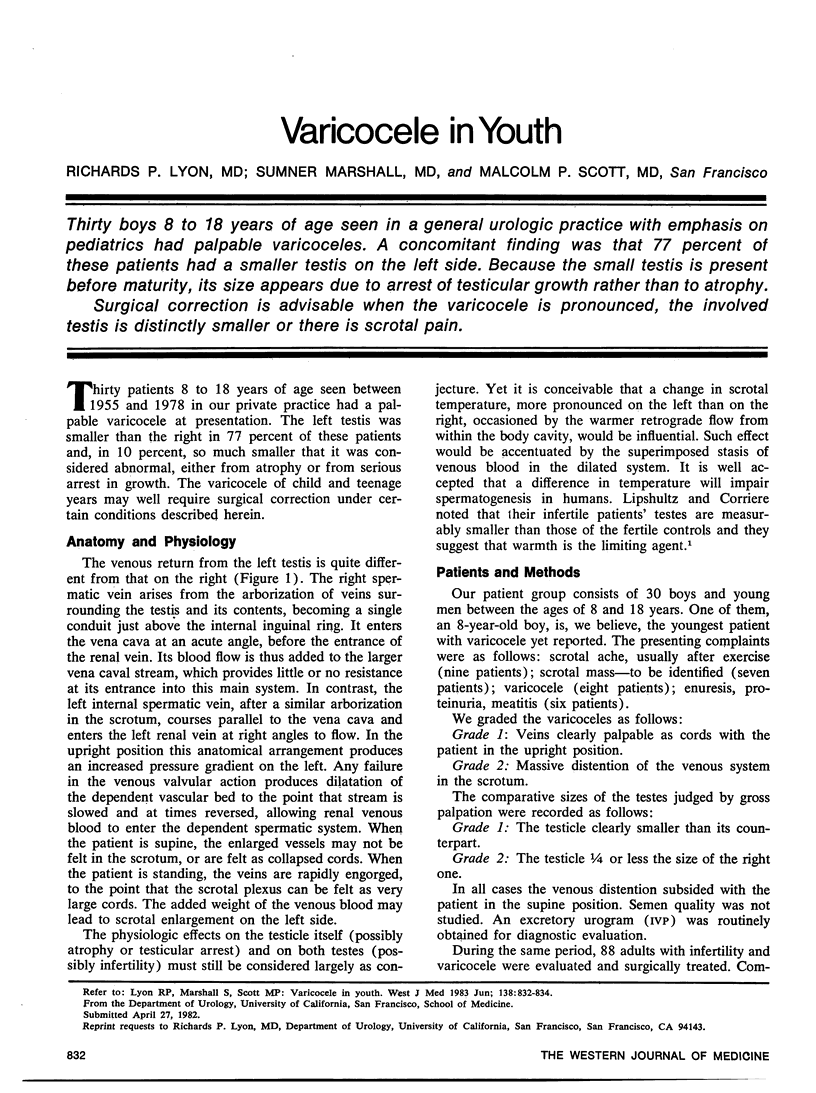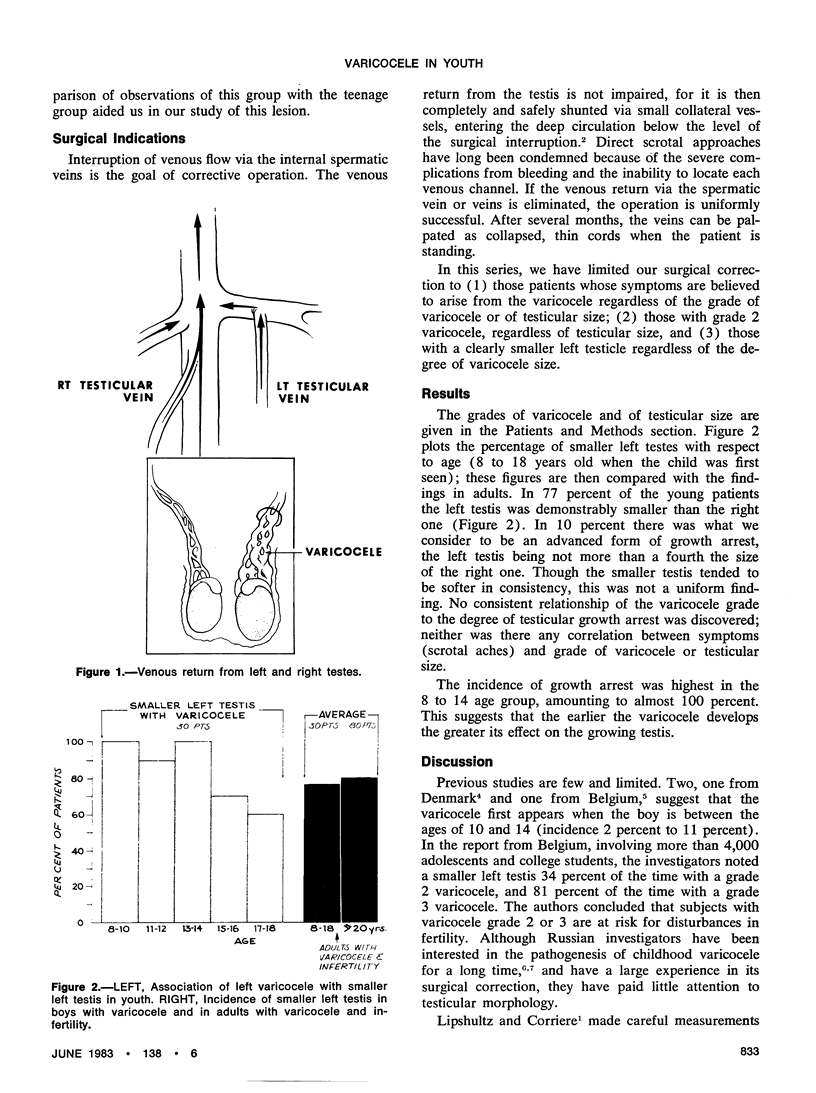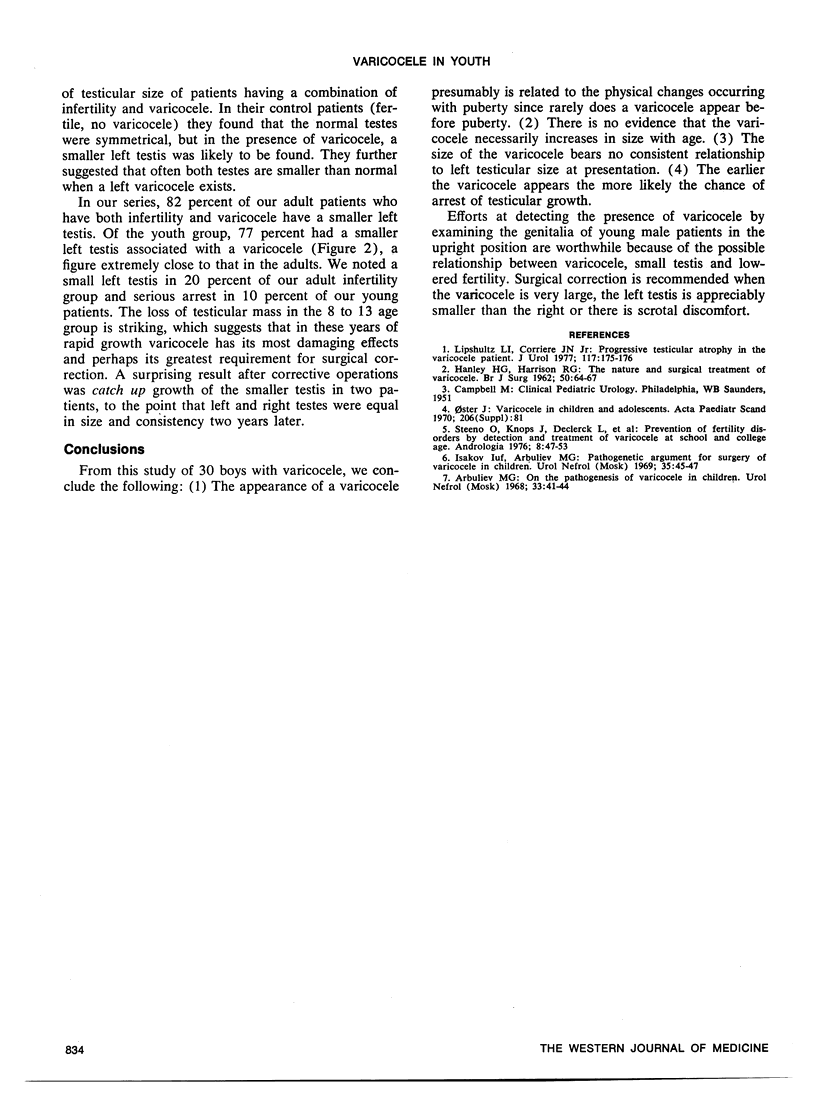Abstract
Thirty boys 8 to 18 years of age seen in a general urologic practice with emphasis on pediatrics had palpable varicoceles. A concomitant finding was that 77 percent of these patients had a smaller testis on the left side. Because the small testis is present before maturity, its size appears due to arrest of testicular growth rather than to atrophy.
Surgical correction is advisable when the varicocele is pronounced, the involved testis is distinctly smaller or there is scrotal pain.
Full text
PDF


Images in this article
Selected References
These references are in PubMed. This may not be the complete list of references from this article.
- Arbuliev M. G. O patogeneze varikotsele u detei. Urol Nefrol (Mosk) 1968 Jan-Feb;33(1):41–44. [PubMed] [Google Scholar]
- HANLEY H. G., HARRISON R. G. The nature and surgical treatment of varicocele. Br J Surg. 1962 Jul;50:64–67. doi: 10.1002/bjs.18005021916. [DOI] [PubMed] [Google Scholar]
- Isakov Iu F., Arbuliev M. G. Patogeneticheskoe obosnovanie operativnogo lecheniia varikotsele u detei. Urol Nefrol (Mosk) 1969 Jan-Feb;34(1):45–47. [PubMed] [Google Scholar]
- Lipshultz L. I., Corriere J. N., Jr Progressive testicular atrophy in the varicocele patient. J Urol. 1977 Feb;117(2):175–176. doi: 10.1016/s0022-5347(17)58387-1. [DOI] [PubMed] [Google Scholar]
- Steeno O., Knops J., Declerck L., Adimoelja A., van de Voorde H. Prevention of fertility disorders by detection and treatment of varicocele at school and college age. Andrologia. 1976;8(1):47–53. doi: 10.1111/j.1439-0272.1976.tb01645.x. [DOI] [PubMed] [Google Scholar]



